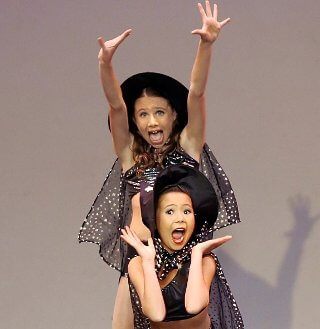Why Dance ?
At Dancentre we believe every child truly deserves the opportunity to explore space, energy, rhythm and self expression through dance. Dance connects the dots between physical, mental, emotional and creative energies.
Dancentre is dedicated to offering students accessible but challenging dance classes that build skills and self-confidence through carefully graded levels.
Why Dance?
Dance is one of the world’s most enjoyable pastimes. Having evolved through the centuries as an essential form of expression and celebration, it is instinctive for children to want to dance.
We’ve all seen the natural exuberance that children express through sound and gesture; when they’re happy they clap their hands, jump up and down and dance around in delight. Their movements reveal their thoughts and inner feelings.
Dance has developed out of this natural expression – its source lies in everyday actions. When children dance they’re performing the original steps that have developed into the higher art form seen today.
The initial motivation for attending dance classes may be purely recreational, but there are long-term advantages to be gained, especially in situations that involve:
- Listening
- Focus
- Following directions
- Memory
- Goal setting
- Participation in cooperative group situations.
Physically, dance strengthens the body, and studies have shown that children who dance regularly are more likely to benefit from increased bone density. Careful training develops:
- Alignment
- Balance
- Coordination
- Control
- Flexibility
- Muscular endurance
- Strength
Children Who Dance:
- Develop an appreciation of a wide range of music from classical to pop.
- Learn to move rhythmically to different time signatures and to recognise various dynamics in music.
Dance allows the body to move through its full range of motion, combining cognitive, creative, emotional and physical processes. Because it uses the whole body, it’s a great outlet for stored up energy. All these things make dance a valuable all-round body toner for children.
Dancentre students participate in performances, assessments and competitions.
Students work towards long-term goals, appreciating the joy of achievement throughout the process, not just the end result.
These experiences give students the opportunity to gain self-assurance before an audience, whether it’s when singing, dancing or speaking.

Dancentre students participate in performances, assessments and competitions.
Students work towards long-term goals, appreciating the joy of achievement throughout the process, not just the end result.
These experiences give students the opportunity to gain self-assurance before an audience, whether it’s when singing, dancing or speaking.
During dance class students are given creative problems to solve through dance-making and improvisation games. There are also choreographic festivals, which provide students with a forum to develop and demonstrate their own compositions.
Class activities allow students to work both on their own, and in co-operative group situations, where they get the chance to take on a variety of roles, either as a leader, partner or team member.
Dance relies on a good memory. Whether it’s a 3 minute solo, a 5 minute group dance or a whole syllabus of steps, the dancer has to think. The sequences and patterns of coordinated movements and techniques that dancers commit to memory result in increased development of the cerebellum.
There are many reasons to dance, the least of which is to aspire to a professional career. Most children participate in dance for the physicality, challenge, music, social contact and because it’s fun, the best incentive of all.

